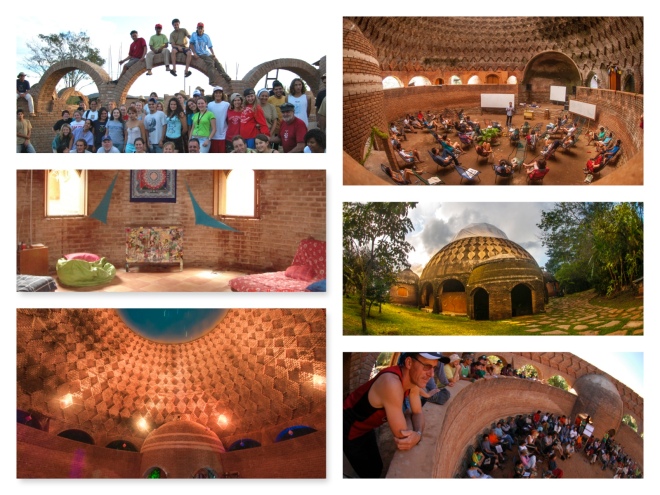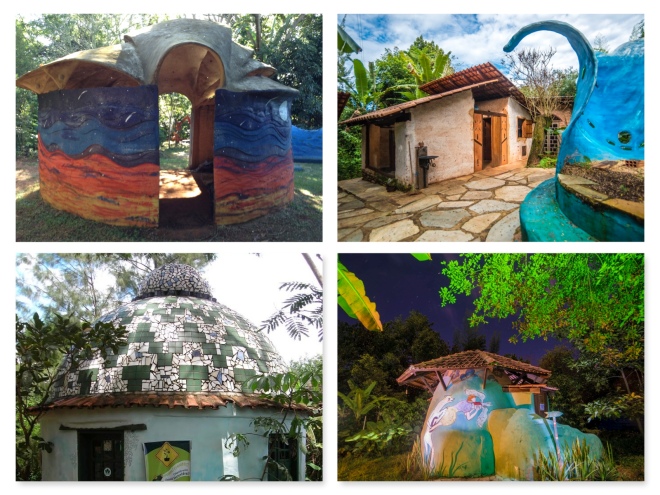Fruit of corruption, or just one of those ads using ‘false news’ to promise riches without having to work?
Not one or the other. This story is simple and real, and it involve intelligence and community spirit, the nature of people.
The principle of cooperation is the secret to prosperity
Last year, the community of the Vale do Mar e Guerra in Pirenopolis Brazil, organized to produce a community crop of organic rice. This was not the first time the community chose to grow a community crop. Community fellowships have long been made, but this time the principles of permaculture were applied to the economy, the environment and local culture. Something has changed in the hood!
The initiative came from our friend and neighbour Liberalino de Oliveira Neto, or “Libera” as the locals call him. Libera started attending Ecocentro Ipec at the age of 16. He studied and then worked at the Ecocentro for many years. Now with 18 years of permaculture experience under his belt, he is a rural entrepreneur and the Secretary of Agriculture in Pirenópolis.
Building trust is the most important step
In 2017, Libera wanted to build a community garden but he had a hard time convincing people in his community. Without volunteer participation and appropriate land, the project would be unfeasible. When interviewed Libera said “People are already too suspicious of politics. When someone from the city hall comes into the community to talk outside the election campaign, they already think it’s a coup. If you didn’t come to ask for a vote, then why did you come? ” Unfortunately, this is the general perception that people have of politicians and civil servants, and it’s not without reason. But Libera is not the type of man to give up on a good idea.
For the first time in the history of the town, the local council decided to support the community in the form of seeds and machines to prepare the earth for planting the yearly crop. In return, it was agreed that the council would hold 5% of the crop produce to use for school meals. A simple and powerful idea.
The problem is the solution
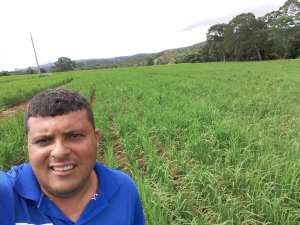
Liberalino has been practising permaculture since 2000. He did not let himself be discouraged by the doors that seemed to have closed during previous attempts and went to friends and family for help. Auntie Cleusi, a local cook in all our events and farmer soon understood the cause and logic of the economy proposed by Libera and agreed to lend 5 hectares of her property for a communal plantation. That was all it took for things to change. One person to believe in the dream of another.
See it to believe it
The first tillage took place on the 5 hectare farm of Auntie Cleusi with the participation of 46 families from the Valley. The families worked 5 days together. The local council gave 8 hours of tractor, 500 kg seeds and 15 tons of lime. After three months over summer, 25,000 kgs of rice was produced. The market value of the rice was Brazilian Reais 498,750. The local council took 5% of the rice for school meals. The rest was divided by the 46 families. Each family received 516 kg of organic rice at the value of R $10,294.

From there everything changed very fast. The news of the success of the first crop spread and the surrounding communities began to show interest. Soon there was land assigned in four different locations and the number of families interested reached to 200.
3 million reais in eighteen days?
The program exploded! Process management was now needed. The communities are distant from each other, up to 40 km inside the same municipality. It was necessary to register people, organize transportation for the working bees, schedule the use of the tractors and keep everyone motivated while accompanying and documenting all of the work.
Participation had only one simple rule: At least one family member must participate in all of the working bees. The family would then receive 100% of their quota at the end of the harvest. Absences became a tag team effort for families. The result was that whole families participated, resulting in less work for each and the day almost always ends in celebration.
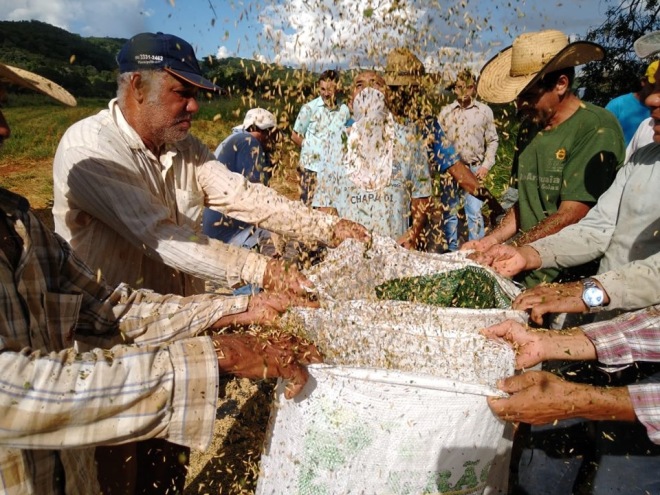
How much is your time worth?
The principle of energy conservation states that energy cannot be created or destroyed. Energy can be transformed into work, but in every transformation, there is a loss. When you buy a kilo of organic rice in the supermarket this rice has gone through a lot of energy exchanges, and so have you.
The yield and productivity of collective work is much greater, as work shared by many is a powerful agent in individual motivation.
Field work has never been a stable activity. Labour laws, designed to keep people in the industry, have never been well adapted. Food production is also more efficient in joint efforts. The nature of agricultural work is that it requires a lot of effort in short periods. The farmer always needs help at critical times. Preparing the soil, sowing, cleaning and harvesting are activities that can happen in a few days if there are enough hands-on, but other farmers are always busy at the same time.
In a few days of collective work, one can do the work that would take weeks to be executed by a single farmer. There is a synergy between reducing the impact of heavy machinery and reintroducing collective labour in agriculture. The result is greater social cohesion and community participation. People work less and develop more awareness of their cultural identity and social position.
2018/2019 – 200 families in 4 communities cultivated 31 hectares of organic rice in 18 days of work. 150,000 kg of rice was produced with the market value of $2,992,500.00. Once the local council deducted the 5% of the produce for school meals, each family received 712 kg at a market vale of $14,204.00. The numbers do not lie.
First the environment
We are observing the production of organic rice in a planned system. One product only, within many productive strategies that result in many others, let alone energy conservation. The land is prepared to eliminate erosion and increase the absorption capacity of water and organic matter with the use of infiltration ditches and intercropping. Forest corridors with multiple species are established, creating protected and level spaces. The straw is returned to the soil, so water and nutrients complete the natural cycle. There is no erosion or pollution. The soil gets richer and moister.
People’s work, and their time, are remunerated with better food and quality of life, resource savings, and proportionately higher health. Less work for more benefit, a basic principle of permaculture. Righteous sharing, caring for the Earth and people enrich the cultural context. People have time to create.
The ancestral nature of our species is of collective organization. People eating together thrive together. The TV is turned off and the fire is on all day. The children seem to be in paradise, and joy is general.

The limits of this account
The price of common rice in the commodity market (Brazil) is around $ 45 for a 50kg bag. Within the current economic model, the farmer receives less than one Brazilian Real per kilo of common rice, produced with chemical fertilizers, heavy machinery and agrochemicals. The consumer pays from 2 to 5 Brazilian Reais per kilo. The cheapest rice is almost always the oldest stock rice.
It is quite possible that the community cannot find one that pays $ 19.95 for a kilo of organic rice produced in a joint effort. But I believe they may not even try to sell it, because the logic behind permaculture is local sustainability.
You could imagine that the community of Pirenópolis would be getting immensely rich if it increased rice production to hundreds of hectares, but this account only works within a local economy, that is, the value exists for what is not spent, which is the way to save money. Maximum quality of food at minimal cost.
If the community were to produce more than enough to sustain itself comfortably for a speculative purpose, it would have to enter the globalized distribution, packaging and marketing economy, but this they already knew.
The problem is the solution. Opportunities lie in limiting factors.
The production limit is determined by the needs of each family. In an organized community, when staple food production exceeds basic needs it is time to discuss investing in the future. What to do with what’s left over?
The economy obtained through cooperation only makes sense when the community applies to the common welfare. The surplus can be very good when it comes to re-targeting the local education, health and general well-being plan. What is missing in the community? Are we going to invest in seed production? How to ensure the continuity of good work? What happens when the city hall changes guard?
What to do with this valuable surplus?
In 2019, the years production had already surpassed the rice needs of each family. So, it’s time to pay attention not to let enthusiasm become complacency. Now we must contemplate the possibilities of growth and decide what to do:
- Marketing the surplus in the local urban market (economic security).
- Diversify production, including agroforestry corridors with vegetables, corn, legumes, manioc and fruit trees (food and environmental security).
- Redesigning areas with permanent corridors, zoning and introduction of appropriate technologies (climate security).
- Carrying out a continuity agreement with landowners to ensure improvements with access (legal security).
- Reserve part of the production to market and invest in the autonomy of the project in the event of the participation of the city cease (political / social security).
These issues are related to surplus production. They are always easier to answer than poverty issues.
Never doubt that a small group of people can change the world. That’s all you can do.
And in the city?
Can you motivate your neighbours to create an urban scale production of food for your community? Anything is possible!
Author: Andre Soares
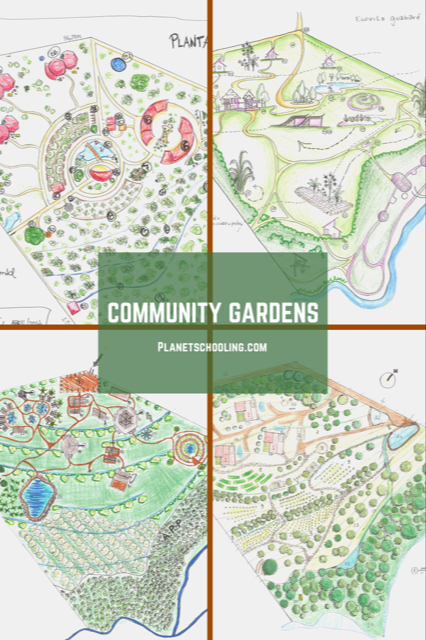



 Place in oven for approximately 30 minutes (200 °C). If you find that you have too much batter, simply pop it in the fridge for the next day.
Place in oven for approximately 30 minutes (200 °C). If you find that you have too much batter, simply pop it in the fridge for the next day.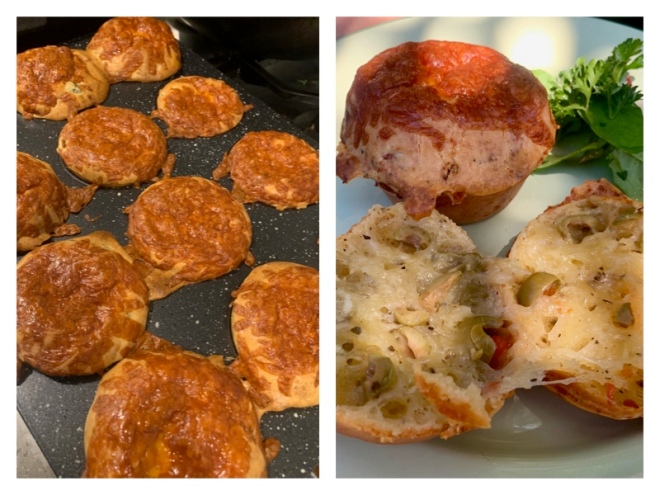 Tapioca flour is made from manioca/cassava. Tapioca flour is found cheap in most Asian supermarkets. You can either use sweet or sour tapioca flour.
Tapioca flour is made from manioca/cassava. Tapioca flour is found cheap in most Asian supermarkets. You can either use sweet or sour tapioca flour.





